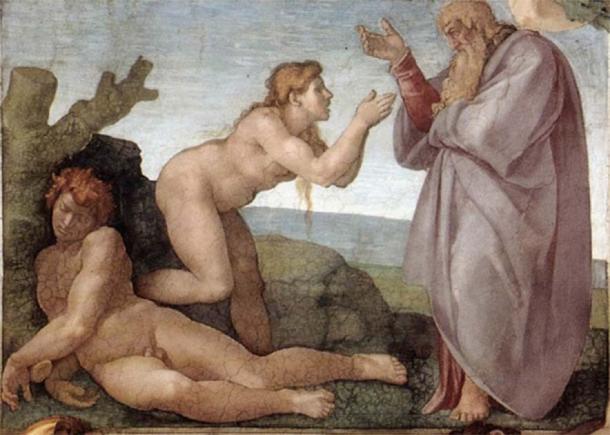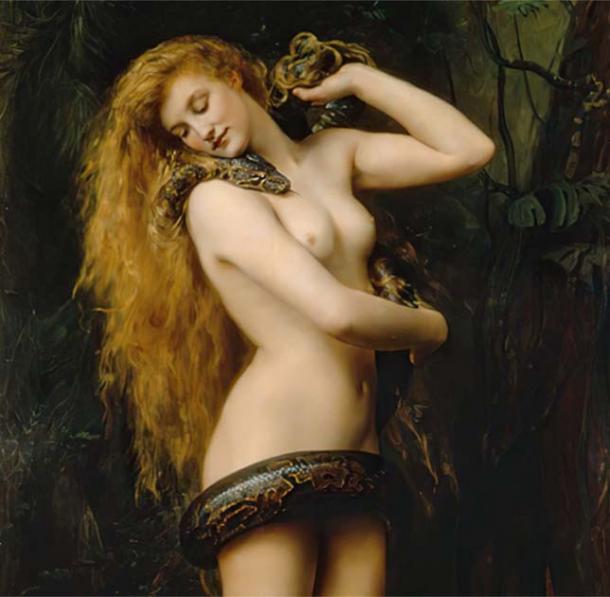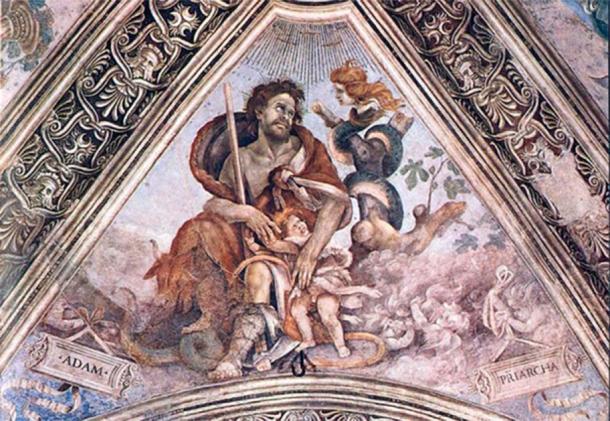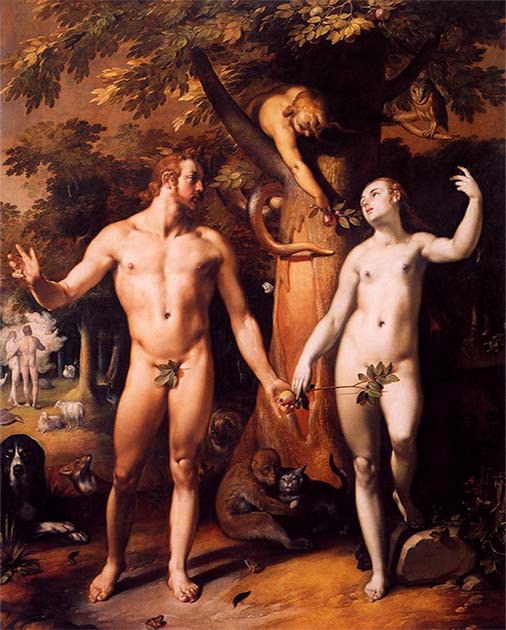Lilith is first mentioned in ancient Babylonian texts as a winged female demon that attacks pregnant women and infants. From Babylonia, the legend of “the lilith” spread to ancient Anatolia, Syria, Israel, Egypt, and Greece. In this guise—as a wilderness demoness—she appears in Isaiah 34:14 among a list of nocturnal creatures who will haunt the destroyed Kingdom of Edom .
This is her only mention in the Bible, but her legend continued to grow in ancient Judaism. During the Middle Ages, Jewish sources began to claim her as Adam’s bold and independent first wife. But, how did Lilith evolve from being a wilderness demoness into Adam’s first wife?

The Creation of Eve from the Sistine Chapel ceiling by Michelangelo. ( Public domain )
Where the Story of Lilith, Adam’s First Wife, Began
The story begins at the beginning on the Bible. The creation of humans is described in Genesis 1 and again in Genesis 2. The first account is fairly straightforward: “So God created humankind in his image, in the image of God he created them; male and female he created them” (Genesis 1:27).
The second account describes how God formed man out of the dust of the ground and then created woman from the side (not rib) of man:
“Then the Lord God formed man from the dust of the ground and breathed into his nostrils the breath of life; and the man became a living being. … So, the Lord God caused a deep sleep to fall upon the man and he slept. Then He (took) from his side and closed up its place with flesh; and (from) the side that the Lord God had taken from the man, He made into a woman and brought her to the man” (Genesis 2:7, 21–22).
In the post-Biblical period, some ancient Jewish scholars took the stance that Genesis 1:27 and Genesis 2:21–22 described two separate events, since it appears that females were created differently in these two accounts.

Section of a painting of Lilith, depicted with a serpent, by John Collier created in 1887. ( Public domain )
Was Lilith Adam’s First Wife?
In her Bible Review article “Lilith” in the October 2001 issue, Professor Janet Howe Gaines explains this reasoning:
“Considering every word of the Bible to be accurate and sacred, commentators needed a midrash [an expansive interpretation] to explain the two different views in the Torah’s two creation narratives. God created woman twice—once with man, once from man’s side; so there must have been two different women.”
Since Adam names the second female Eve, Lilith was identified as the first female in order to complete the narrative. Thus, Genesis 1:27 describes the creation of Adam and an independent, powerful and unnamed woman who has come to be known as Lilith.
The details of Lilith’s creation and relationship with Adam are recounted in The Alphabet of Ben Sira , an apocryphal work from the 10th century AD. Dan Ben-Amos explains that, although this is the first extant text that records the full legend of Lilith, her story existed much earlier.
In the post-Biblical period, rabbinic sages identify Lilith several times, not by name, but by the title “the First Eve,” indicating that her full story was well known in oral tradition .

Adam clutches a child in the presence of the child-snatcher Lilith, in a fresco by Filippino Lippi at the basilica of Santa Maria Novella in Florence. ( Public domain )
How Was Lilith Different from Eve?
The anonymous medieval work entitled The Alphabet of Ben Sira relates that God created Lilith from the earth, just as he had created Adam. They immediately began fighting because Adam always wanted to be on top of Lilith and would never agree to serve under Lilith.
Recognizing that Adam would not yield to her, Lilith “pronounced the Ineffable Name and flew away into the air” (taken from The Alphabet of Ben Sira ). Three angels Snvi, Snsvi and Smnglof were sent to pursue Lilith but she fiercely refused to return with them to the Garden of Eden .

The Fall of Man, showing the serpent in the Garden of Eden as a woman, by Cornelis van Haarlem circa 1592. ( Public domain )
Lilith’s Resolve: The Story of Adam’s First Wife
“’Leave me!’ Lilith said. ‘I was created only to cause sickness to infants. If the infant is male, I have dominion over him for eight days after his birth [until his circumcision on the 8th day after his birth protects him], and if female, for twenty days’” ( The Alphabet of Ben Sira ).
As a compromise, Lilith promised that if she saw the angels’ names or forms on amulets, she would leave the child alone. Lilith also agreed that 100 of her children— demons—would die every day but she fiercely asserted the rest would live.
If the first male had only agreed to serve under the first female half of the time (that is all she asked of him) Lilith would have been Eve: It is better to live outside the garden with Eve than inside it without her. Blessed be the One who brought us together and taught me to know the goodness of her heart and the sweetness of her soul! “Wheresoever she was, there was Eden” (Adapted from Mark Twain).
Top image: Lilith has been portrayed as a demoness who refused to return to the Garden of Eden. Source: Gasi / Adobe Stock
By Rabbi Allen S. Maller
Update: This article was updated on 31-3-2023 and the use of ‘The Book/Tale of Ben Sira’ was corrected to ‘The Alphabet of Ben Sira’ a later writing that the author is referring to.
For a modern perspective of Lilith, see chapter 7 of my book “God, Sex and Kabbalah ” and for a general Jewish view of sex see my most recent book, “Which Religion Is Right For You? A 21st Century Kuzari “ available on Amazon.
Source: ancient-origins.net








